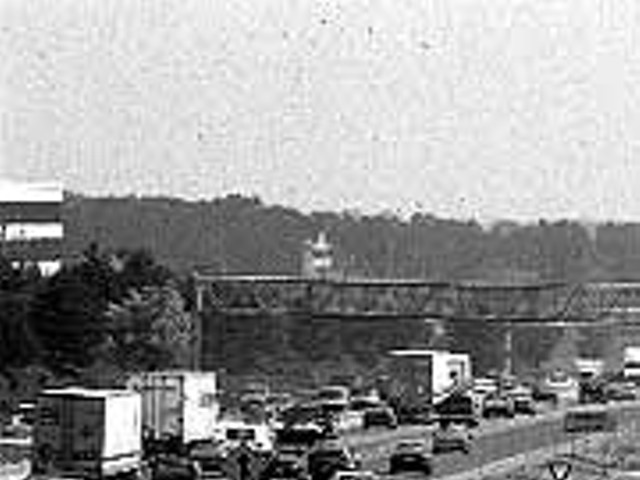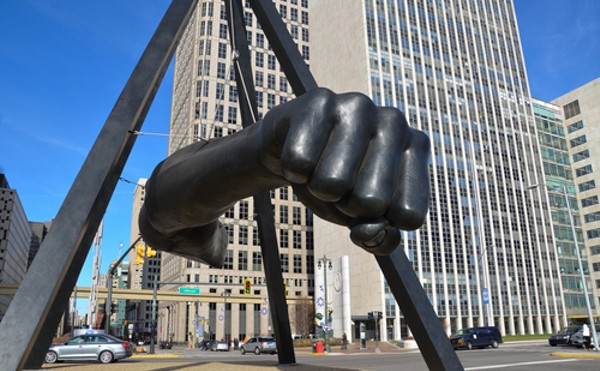A man sits at a small upright piano, a slightly worried, blank look on his face as he plays something uncomplicated, lilting and sad. His composure, cool suit and close, hipster haircut give him an air of self-confidence, but the way he looks down at the keys or stares into space tells of deep, quiet suffering inside. The man is French singer Charles Aznavour acting the part of a debonair recluse in Shoot the Piano Player, one of the modern classic films of French New Wave director François Truffaut.
This bittersweet mix of emotions is an earmark of Truffaut’s early work: euphoria, sex and lighthearted banter counterbalanced – in The 400 Blows (1959), Piano Player (1960) and Jules and Jim (1962) – with alienation, unrequited love, brutality and sudden violence. And it raises the curtain on two-and-a-half decades of filmmaking in which poetry, subtlety, exuberant camerawork and expertly told tales add up to greatness and compelling entertainment.
That alone would be reason enough for the retrospective, The Films of François Truffaut, organized by the Detroit Film Theatre for its silver anniversary season this fall. Screening all 21 of Truffaut’s features, along with his two early shorts and a documentary, François Truffaut: Stolen Portraits (full of interviews with actors and directors, poignant film clips and a strong sense of how much this poet of celluloid is missed), the program begins this Friday evening. Taking up the whole DFT schedule for four weeks, it then continues on Monday evenings until the end of November. For Truffaut fans, it’s a feast. For those unfamiliar with these beautiful, profoundly human works, it promises a revelation.
Says DFT founder-curator Elliot Wilhelm: "One of the things that I’ve always wanted to be able to do – and space on the schedule be damned – is retrospectives of great directors’ films that a lot of younger people have not been able to see on the big screen the way they should be seen."
But strangely enough, recent developments in home video technology helped Wilhelm make the Truffaut overview possible: "With many of Truffaut’s early works and many of his most important films, the distribution rights lapsed years ago and fell into a kind of limbo – and the Truffaut estate made it impossible for the films to be distributed theatrically in the United States.
"What’s happened now is that the estate has arranged for DVD release of 13 of the films that were previously unavailable in any format. And in order to make a DVD, or a pristine video transfer, you of course have to go back to the original camera negative and make beautiful new prints … so while they were at it, they made the wise decision to make these new prints available to various cultural institutions and a few theaters across the U.S."
With 13 of 21 works in hand, Wilhelm decided to try for the full monty: "We went to the original license holders of all of the Truffaut films, and there were many different ones – there are, in some instances, one-of-a-kind prints available in the vaults of these studios – and they were very kind in allowing us access for our one-day showings of the best existing print materials, all in 35mm.
"We have every one of his films. And some, like Day for Night (1973), are not available on video in the original French versions."
Though his mission includes fidelity to the originals and a desire to screen only the best quality prints, Wilhelm brings this whole project down to an artistic bottom line: "It’s been 40 years since the release of The 400 Blows. Truffaut died in 1984 at the age of 53. He completed a remarkable body of work and what’s great in a retrospective like this is that you get to see this individual artist and how he changed over the years, how he grew, how he matured, how his films changed."
At the age of 21, Truffaut began writing articles for Cahiers du Cinéma, the journal that was to revolutionize thinking about film culture and spawn the French New Wave. In a now famous essay, "A Certain Tendency of the French Cinema," Truffaut attacked the hierarchy and sluggishness of the ’50s French film establishment. With other Cahiers writers who would also soon begin brilliant careers as directors – among them Jean-Luc Godard, Claude Chabrol and Eric Rohmer – he began laying out the basic principles of a theory of the auteur, the tremendously influential idea that the director of a film is its real author.
Truffaut’s first films reflected his admiration for the energy and economy of American productions; he was fascinated, like Godard and fellow New Waver Alain Resnais, by science fiction, film noir and adventure serials. But his first feature, The 400 Blows, became the initial installment of the very French "Antoine Doinel story" – starring actor Jean-Pierre Léaud as a kind of autobiographical stand-in for the director – that was to continue intermittently for two decades.
The poetic photography and editing of an early masterpiece like Shoot the Piano Player eventually gave way to Truffaut’s more seamless "objective" style. But films like The Wild Child (1970) and The Last Metro (1980) have their own mysterious auras, their own dearly won emotional, even political, truths. From passion at the brink of dementia (The Story of Adele H., 1975) to tender self-deprecation (The Man Who Loved Women, 1977), from intense psychological wisdom (The Woman Next Door, 1981) to unbridled joy in filmmaking itself (Day for Night), François Truffaut always kept his eye open wide to the imaginary spectacle, to the magic possibilities of the silver screen.
Which is why we keep watching him, again and again.
George Tysh is Metro Times' arts editor. E-mail him at [email protected]




